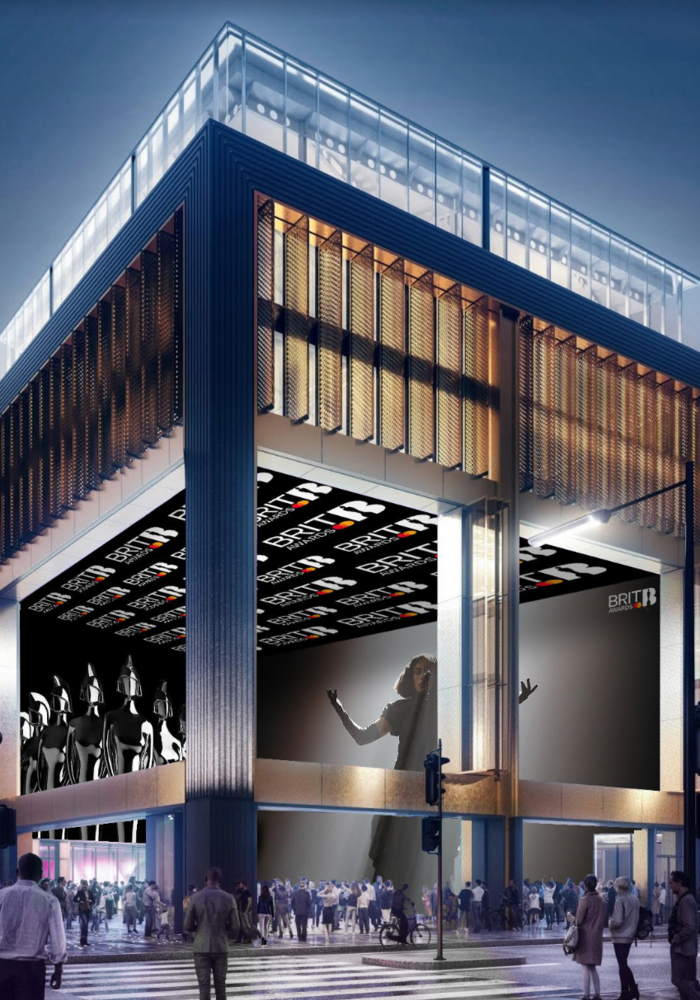Outernet CEO Philip O’Ferrall has spoken to Headliner about the ground-breaking new development being carried out in London’s legendary Denmark Street, what it means for the future of music in the UK and how it is looking to rejuvenate the area with a host of new and restored music venues.
The major development will see not only the construction of an immersive atrium, complete with the largest deployment of video screens in the world at the entrance of Tottenham Court Road tube station, but also the opening of a new 2,000-capacity multi-purpose entertainment venue, the restoration of the iconic 12 Bar Club, as well as a new music-driven focus on the area’s surrounding retail outlets, celebrating the location’s storied musical history.
In its efforts to engage the UK music industry, Outernet has teamed up with the BPI (organiser of the BRITs) in a partnership that will see BPI-related music and video content beamed onto the vast screens in the Tottenham Court Road atrium. This content, along with content curated by Outernet and its various partners, will run throughout the day and the evening. According to Outernet, projected footfall for this space is in the region of 400,000 per day.
Headliner sat down for a chat with CEO O’Ferrall to find out more about what Outernet can offer the capital and its musical ecosystem…
Tell us about the origins of the Outernet project.
My background is as a television executive, so all the way through my career I've been in the entertainment of mass audiences. And in short, the project was focused on driving mass footfall in a very busy area and then building various different entertainment assets around it. We wanted to create an entertainment district, launching in London and then rolling out in other countries around the world. So it will become a worldwide network of immersive entertainment districts. It will be the world's most advanced public atrium, delivering our own and our partners’ content.
Importantly, the location of Outernet London is key. At the heart of the district is Denmark Street, so that asset is sat within the centre of the new district. You're right in the centre of town, adjacent to Soho, with all of its diversity and vibrancy.
What can you tell us about the event spaces? Will they be used predominantly for live music?
There were three main focus areas. The first one was to bring back music to Denmark Street and the main Outernet district. So, you'll see the 12 Bar relaunch as a live gig venue. On the street level and below ground, the target is for that to be at least five days a week of live music. Sitting adjacent to that is the 2,000-capacity mixed-use venue, and the focus there is absolutely for it to be used as a live music venue in the evenings. However, it will also be available for other events in the daytime or even certain times of the week, it will be booked for non-music, but it will always be events in the entertainment category. Essentially, it's a mixed-use entertainment venue.




